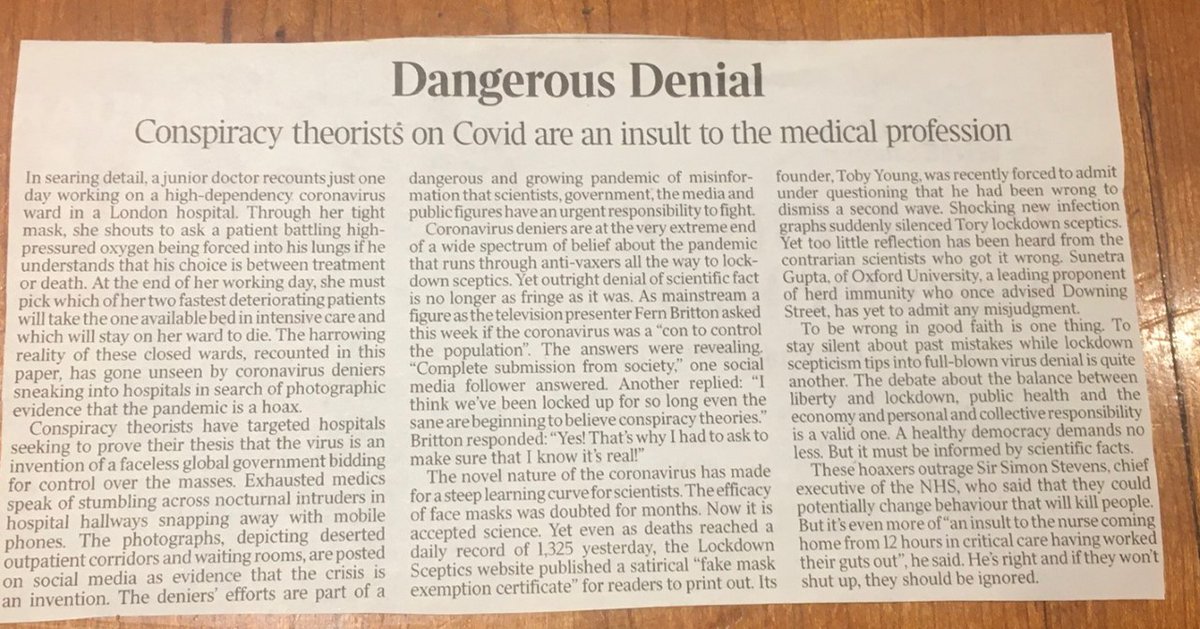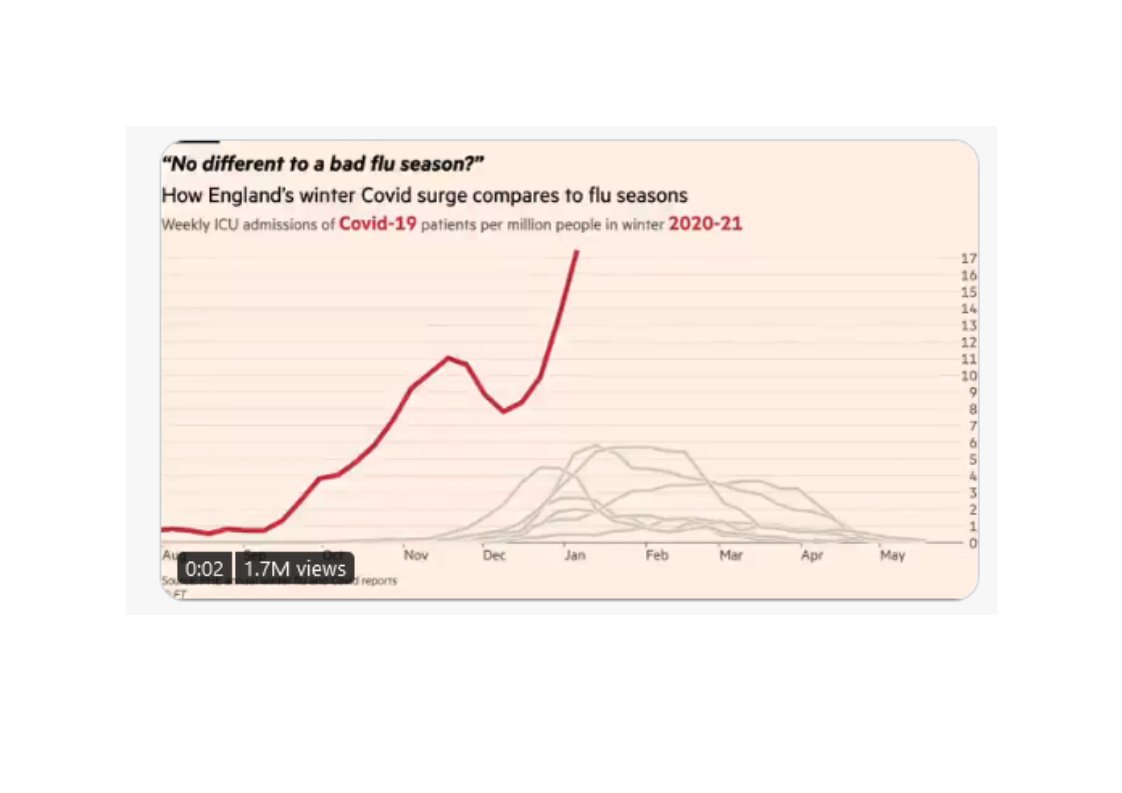
1/23 We haven't had a lot to celebrate during this pandemic. But achieving the milestone of offering vaccine to the over 70s, health and care workers and the most clinically vulnerable just before target date is a huge cause for celebration, given the scale of the achievement.
2/23 When Margaret Keenan got her first jab in Coventry on December 8th last year, who’d have thought that, by Valentine’s Day, we’d have vaccinated over fourteen million people across the UK in just ten short weeks? Amazing, extraordinary and truly, really, world class!
3/23 I’ve been struck by how much joy and relief has been brought to those doing the vaccinations and those receiving them. A GP told me yesterday that nothing had given him greater pleasure in his long career. And that the patient's relief was sometimes overwhelming.
4/23 It's vital to recognise the extraordinary contribution of the staff and volunteers who have made this happen. One of my close family had their jab yesterday and was in awe of the volunteer standing outside in the freezing cold for a four hour shift meeting and greeting.
5/23 What I wanted to share in this thread was the slightly untold story of some of the extraordinary challenges the NHS has had to overcome to deliver this target. Requiring superhuman effort from NHS leaders and staff, way beyond the call of duty. Five challenges set out below.
6/23 Challenge 1. The complexity of the end to end delivery process required. Here’s just a few of the steps needed from an NHS delivery perspective. Receiving the vaccines in a central warehouse and then ensuring distribution to the frontline on the same day…
7/23 ...Setting up & ensuring safety and staffing of more than 1,500 vaccination sites across country. Contacting right patients from JCVI’s priority groups & inviting them for vaccination. Storing, at right temperatures, and then making up, vaccines ready for administration...
8/23 …Meeting and greeting often frail patients or going out to their home/care home. Getting their informed consent (a major challenge for some who are unable to easily give that consent). Administering the vaccine safely and then checking no adverse reaction…
9/23 …Ensuring meticulous record keeping so there is a clear record of who has had the vaccination. Frequent reporting of detailed data to assess and publicly report progress and identify problems in particular communities. All done at whole nation reach and huge pace.
10/23 Challenge 2. The lumpiness of vaccine supply. When you set up a logistical delivery chain as complex, and at such a large scale, as this you want the supply going through it to be as even and predictable as possible. Especially delivery of vital jabs to vulnerable people…
11/23 …Although it's getting a lot better now, it's important for everyone to understand how, in these early days, vaccine supply into the NHS, and therefore out to the NHS frontline, has been incredibly lumpy. This has lead to major problems to be overcome on the ground…
12/23…Different to expected/planned volumes delivered, days of delivery, gaps in supply, often at less than 24 hours notice, have caused major frontline headaches. Good example of problem and heroic (word used advisedly) frontline reaction here:thetimes.co.uk/article/covid-…
13/23 …This lumpiness is nobody’s fault. Manufacturers, batch approvers, @beisgovuk, @DHSCgovuk and NHS national team under @Emily_JR_Lawson have all done everything they can to try to reduce the lumpiness. But there have been a range of problem to overcome on the ground….
14/23 …This has meant huge amounts of rapid turnaround work at the frontline e.g. extended hours working, working at very odd hours at short notice, delayed leave etc. Willingly done given importance of campaign but source of some understandable frontline frustration as well!
15/23 Challenge 3. The lack of forward visibility of supply. Highly complex “just in time” logistical delivery operations like this depend on forward visibility of supply. They can then deliver the right goods to the right place at the right time (think supermarkets)...
17/23 …But visibility on forward vaccine supply has been severely constrained by supply lumpiness & globally competitive race for vaccines. Governments internationally have been (and had to be) very coy about what supply they have, when (ref EU vaccine row a fortnight ago).
18/23 Challenge 4. Doing an unprecedently large, at pace, vaccination campaign at the same time as a 2nd/3rd wave of pandemic and winter, always the NHS’s busiest time. Two community NHS trust CEOs I spoke to yesterday said their trusts have been under unbelievable pressure…
19/23 …And one of a group of GPs I spoke to yesterday said that last week had been their busiest ever in terms of “ordinary GP demand”. Juggling “ordinary winter workload”, a covid peak and the vaccination campaign has been an unbelievable stretch for an already exhausted NHS.
20/23 Challenge 5. Tacking vaccine reluctance. NHS nationally and locally has worked very hard to combat any misinformation, monitor take up and adjust strategy / approach to maximse take up wherever needed. Excellent work, for example, with BAME community and faith leaders.
21/23 There are many more challenges to overcome. Expanding campaign to vaccinate the rest of the population at real speed. But note how target for remaining 5 JCVI initial priority groups has already come forward from initial end of May to end of April thanks to NHS hard work…
22/23 …And there's a huge challenge to build new, long term, sustainable infrastructure needed to administer an annual covid-19 vaccination booster campaign. For example a workforce model that allows us to sustainably administer jabs and do core NHS work at same time.
23/23 But the way NHS has overcome challenges to deliver vaccination campaign so far should give confidence we can meet these new ones too. There’s a huge, quiet, pride and satisfaction across the service that, once again, when the nation needed us most, the NHS delivered.
• • •
Missing some Tweet in this thread? You can try to
force a refresh





